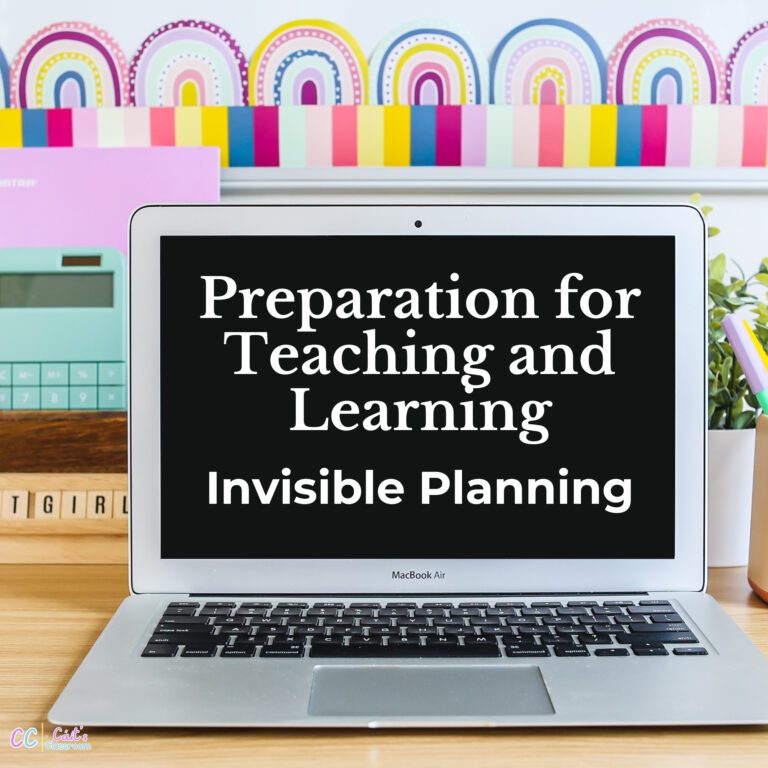This three-part series on preparation for teaching and learning has been designed to guide you through the planning requirements of the new Primary Mathematics Curriculum. We began with invisible teacher planning before moving on to visible preparation for teaching and learning. Now, in this final part, we’ll explore recorded preparation and planning—what exactly should you formally document as an NQT?

What is Recorded Planning and Preparation?
Recorded planning and preparation in the context of the new Primary Mathematics Curriculum is the formally documented aspect of teacher planning and prep. It complements both invisible and visible preparation for teaching and learning and, most importantly, is intended to be made up of practical and purposeful working documents that are individual to each teacher.
While all recorded planning and preparation in maths should be aligned with the learning outcomes of the new Primary Mathematics Curriculum, the way in which it is recorded is unique to each teacher and the school/classroom context that they are immersed in. According to official guidance, recorded planning and preparation should clearly outline the planned learning focus and experiences. In simple terms, it should answer the questions: What will children be learning, and how will they demonstrate it?
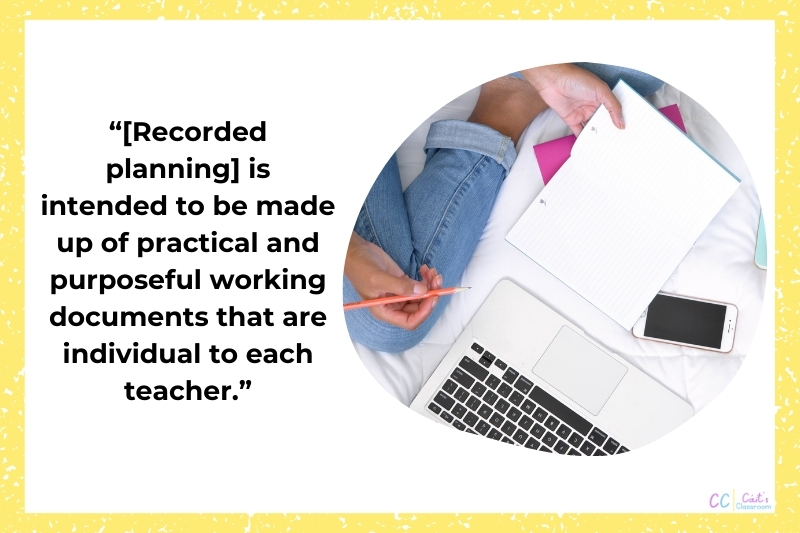
Long-Term Planning for NQTs
In terms of primary maths education, long-term planning involves mapping out broad goals and learning objectives over an extended period, for example, a term or academic year. Using the new Primary Mathematics Curriculum as a guide, the goal is to outline the sequence of strands, strand units and learning outcomes that will be covered to ensure student progress throughout the year.
Whole-School Plans
Your long-term planning should be guided by your school’s whole-school mathematics plan. The whole-school plan is like the backbone of mathematical learning across the entire school. It’s a collective blueprint that guides teachers, students, and even parents on how maths is taught and learned.
This plan ensures everyone is on the same page, working towards common goals and using consistent strategies. It should outline what topics are covered, how they’re taught to different age groups, and how progress is tracked. Ask your principal for a copy of your whole-school mathematics plan as the starting point for your long-term planning.
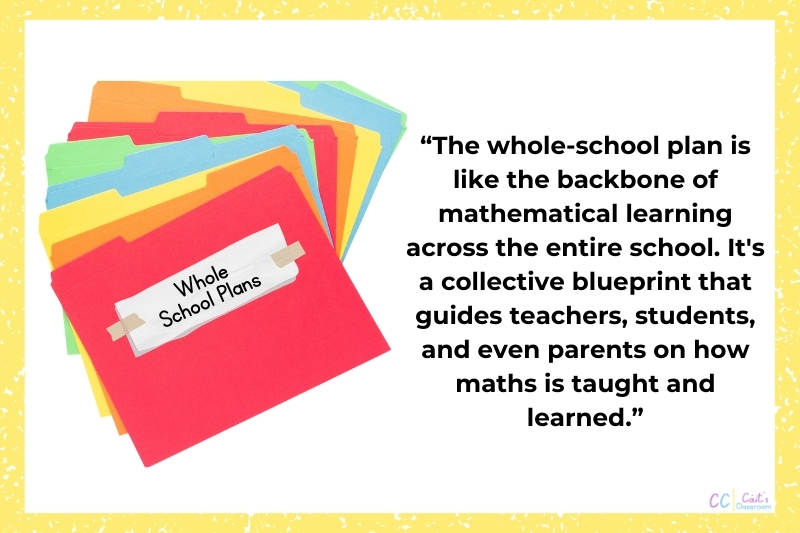
Termly-Plans
Once you’ve familiarised yourself with the whole-school mathematics plan, you can make a start on your own long-term planning. I recommend planning on a termly basis as an NQT as you need time to get to know your students and to get to grips with the new Primary Mathematics Curriculum in practice.
Plan for September – December first, instead of trying to plan for the full year. This way, you can reflect on and amend your planning for term 2 if necessary. The Department of Education recognise that your long-term plans are working documents and expect you to adjust them in response to children’s interests, abilities and needs. Because of this, they are not intended to be overly-detailed, so that you have the flexibility needed to plan for meaningful learning experiences relevant to your individual class.
Long-term planning documents for NQTs should include reference to the the overall aims of the new Primary Mathematics Curriculum as well as specific strand units, strands, elements and learning outcomes to be covered. The NIPT recommend that all long-term planning should also include examples of learning experiences, teaching strategies and methodologies, resources to be used, differentiation, assessment methods and linkage/integration with other areas of the curriculum.
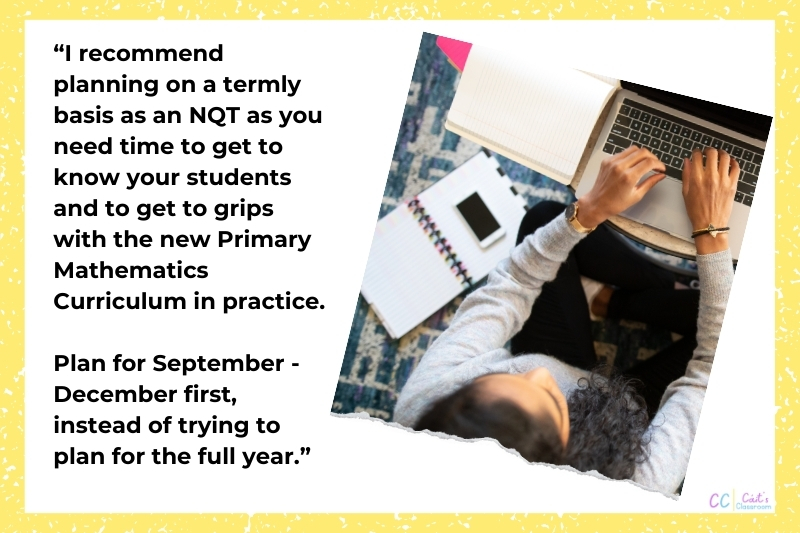
Short-Term Planning for NQTs
When completing the Droichead process, NQTs start with weekly teacher planning, transitioning to fortnightly on completion of their induction period. Short-term planning is key, outlining the week’s learning focus, intended learning outcomes from the new Primary Mathematics Curriculum, engaging learning experiences, and chosen teaching strategies, methodologies, and assessment methods. As with long-term planning, the NIPT also advises including necessary resources, differentiation plans, and links to other curriculum areas.
Fortunately, short-term teacher planning for NQTs is also meant to be concise and adaptable, allowing for variations in detail among teachers. While your short-term planning should elaborate on the detail provided in your long-term plans, you can avoid spending excessive time on elaborate activity descriptions. Remember, the goal of all planning is to effectively implement the new Primary Mathematics Curriculum, not to drown in paperwork.
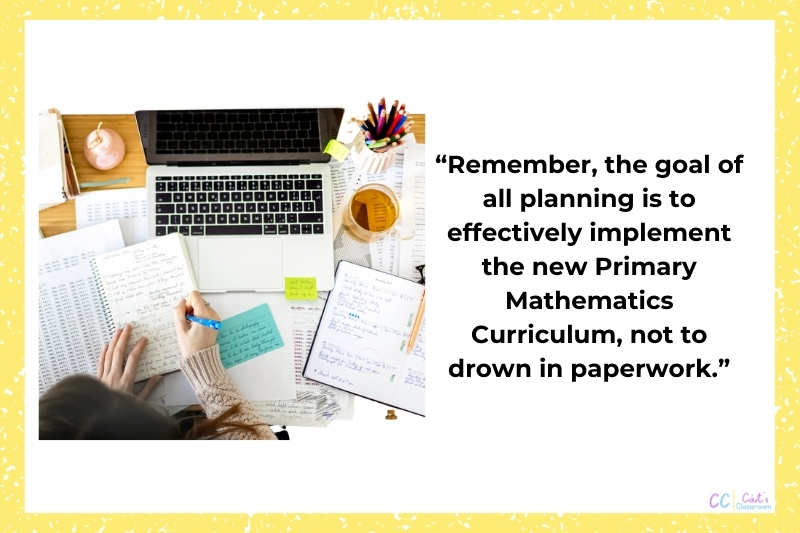
Cuntas Míosúil
Your ‘cuntas míosúil’ is a formal progress record, outlining what you’ve taught over the past month. The format of the cuntas is often agreed on at a whole-school level, so ask your principal if there is a particular template they would like you to follow. At the end of each month, use this template to provide a written summary of the topics covered in each subject.
More often than not, a checkbox can be added to your short-term plans which you tick if you taught that particular content. In this way, your short-term plans now show what has been taught and can be combined to show a full month of learning, to be submitted as your cuntas míosúil.
Don’t forget to include a reflection on the teaching and learning throughout the month, for example, did most students achieve the intended learning outcomes in maths? This reflection can be hand writte or typed on to your weekly plans if submitting as your cuntas.
In conclusion, long-term planning sets the stage for a successful academic year, aligning with your school’s whole-school mathematics plan and the broad goals and objectives of the new Primary Mathematics Curriculum. Short-term planning ensures you have a clear roadmap for each week, facilitating engaging and meaningful learning experiences. Finally, your cuntas míosúil keeps you accountable and reflective, documenting both your efforts and your students’ achievements in mathematics.


